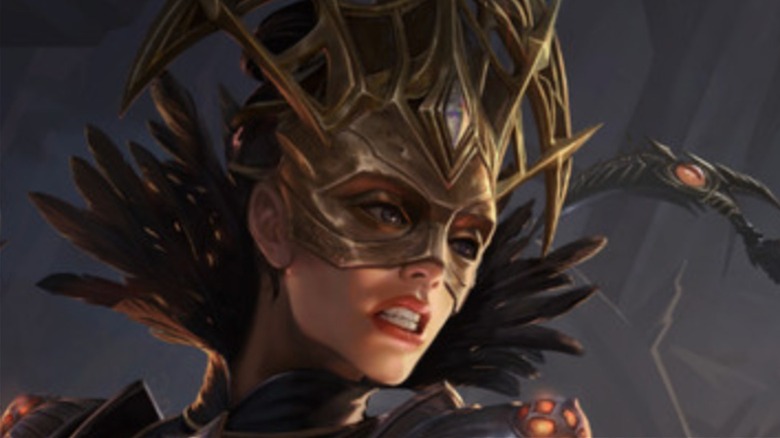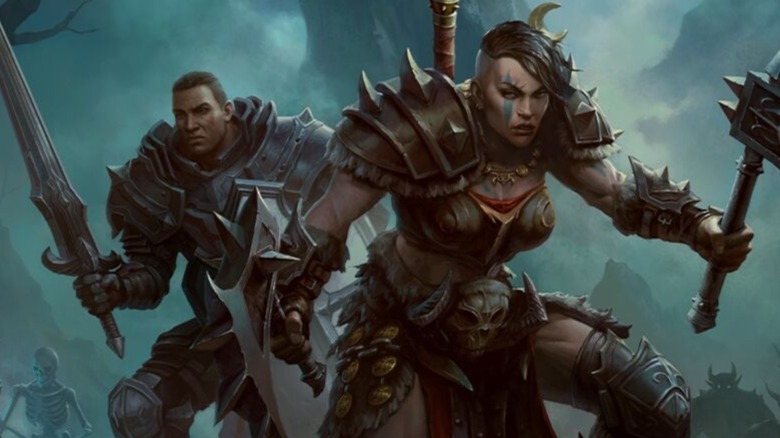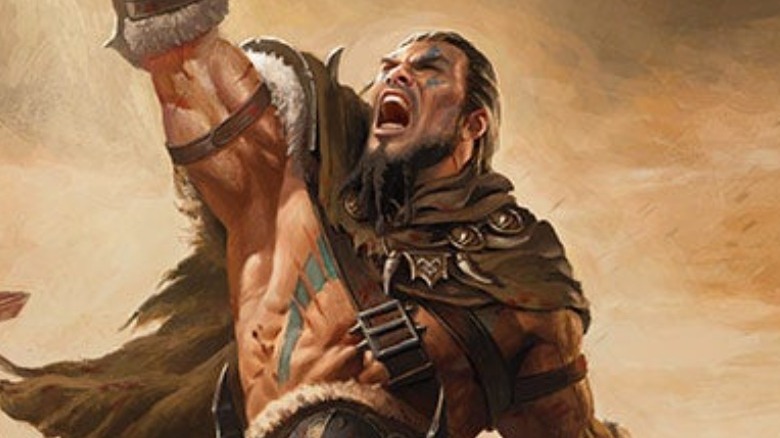Diablo Immortal Is Somehow Worse Than Fans Thought It Would Be
"Diablo Immortal" hasn't had the most auspicious start. Blizzard announced "Diablo Immortal" as a mobile version of its classic isometric action title way back in 2018, and the developer claimed that the game would take the series in a new direction entirely. Overall, the team promised that players would be able to earn any item in the game by their own merits, even if "Diablo Immortal" included some limited microtransaction items or abilities. Cut to 2022 and the official release of "Diablo Immortal," and fans discovered Blizzard's promises weren't quite the case. In fact, there's one big problem gamers have with "Diablo Immortal," which becomes more egregious by the day.
Critics have said that "Diablo Immortal" played like a true "Diablo" title, but that frequent opportunities for microtransactions and pacing issues dampened the experience. In fact, the game features microtransactions so prominently that it won't release in some regions that have strict laws against loot boxes. Because loot boxes are somewhat related to gambling – because of the nature of chance and randomization – some countries have outright banned games that feature loot box-related microtransactions, fearing children may become addicted to gambling as a result. "Diablo Immortal" definitely falls under that umbrella.
It turns out that microtransactions are at the heart of gamers' biggest issue with "Diablo Immortal," which is the cost of upgrading one's character. Things are worse than fans thought it would be, even though many already had low expectations.
Players have to spend money
There's no getting around the hard truth: To fully level up their character in "Diablo Immortal," players have to shell out real-world dollars. Matt and Michael of Bellular Gaming investigated microtransactions in the game, ultimately deeming it "monetized in a predatory, disgusting manner." The pair played the game in different formats, with Michael tackling the game on PC and Matt working through the game on mobile. Both gamers said that "Diablo Immortal" felt and played like "Diablo 3," which was comforting. But then the microtransactions started.
"They have straight up just taken the mask off," Matt said. "They're not trying to hide anything anymore." He explained that from the first moments of the game, microtransactions are present to offer easier leveling, special power-ups, and a variety of other opportunities. The duo compared "Diablo Immortal" to "Lost Ark," another free-to-play game. While "Lost Ark" offers a variety of cosmetics and the ability to skip certain parts of the game, "Diablo Immortal" provides an opportunity to spend money at every turn in the game.
Even more egregious than the frequency of the microtransactions in "Diablo Immortal" is the fact that players basically can't fully level up their character without spending money. In order to max a character, players will have to find and use Legendary Gems, which can be found in Rifts. Purchasing different Crests can increase one's chances of finding a Legendary Gem within an Elder Rift. Bellular News estimated that players could naturally earn anywhere from 1-3 Legendary Crests (which guarantee a Legendary Gem) per month, but those Crests – and therefore gems – can be purchased at any time. Players unwilling to spend money on the game probably won't even encounter the higher-ranked gems.
But how much money might players need to fully upgrade their character?
Many gamers are angry about Diablo Immortal
According to one Redditor, it costs about $45,000 to fully max out one stat in "Diablo Immortal." By this metric, it would theoretically cost over $100K to max out a character. Without paying money and engaging in microtransactions, it's unlikely a player would ever fully level up their character.
Prominent streamer Asmongold also demonstrated how "Diablo Immortal" trains players to spend money on items to guarantee better Rift runs by playing two Rifts back to back. In one, he paid for power-ups that guaranteed more loot. A second run showed an average free run of Rift, during which he earned nothing for his troubles. One Asmongold fan calculated that players could theoretically spend up to $400 an hour maximizing their efforts in Rifts to earn the most loot. Some gamers simply began calling the game "Diablo Immoral" to express their dislike of the microtransaction system.
However, according to some critics, the pay-to-win aspect of "Diablo Immortal" doesn't begin until midway through the game, when leveling suddenly becomes difficult and microtransactions seem like an easy way out. Forbes' Paul Tassi explained that the early stages of "Diablo Immortal" are fun and easy to play, but that leveling slows to a halt once players reach level 30 or so. Then, paying to earn more loot seems like a luxury one needs. Tassi called "Diablo Immortal" a gacha game, arguing that the percentages of rare loot are skewed against the player.
Ultimately, "Diablo Immortal" has turned out to be more frustrating than fans initially expected, which is saying a lot considering it was booed the second it was announced.



